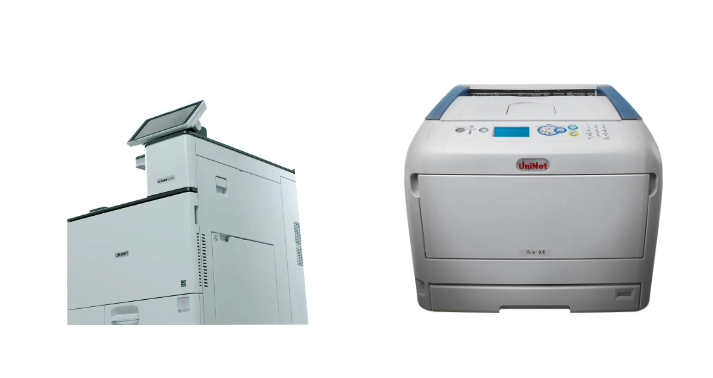Printing Press Machines: How They Work and Why They Still Matter in the Digital Age

Despite the rise of digital media, printing press machines remain vital in industries ranging from packaging and publishing to advertising and education. These machines have evolved significantly over the centuries, enabling faster, more efficient, and higher-quality print production than ever before.
In this article, we’ll take a deep dive into what a printing press machine is, the different types available, how they work, and the industries that still rely on them today.
What Is a Printing Press Machine?
A printing press machine is a mechanical device used to apply ink onto a substrate (like paper, plastic, or cardboard) to reproduce text, images, or patterns in large quantities. Since Johannes Gutenberg’s invention in the 15th century, the printing press has transformed from a manually operated device into a highly automated, digital-controlled system used in industrial settings around the world.
How Does a Printing Press Machine Work?
The basic principle behind a printing press is simple: ink is transferred from a printing plate or roller to the material being printed, using pressure. The method of transferring ink varies depending on the type of printing press.
Here’s a general breakdown of the printing process:
-
Design Preparation – Graphics and text are created using design software.
-
Plate or Image Setup – The design is transferred to a printing plate, screen, or digital format.
-
Ink Application – Ink is applied to the plate or roller.
-
Pressing Process – Material is pressed against the plate, transferring ink onto the substrate.
-
Drying or Curing – The printed material is dried or cured depending on the ink type.
-
Finishing – The print is cut, folded, or bound as needed.
Types of Printing Press Machines
There are several types of printing press machines, each suitable for different applications and production volumes.
1. Offset Printing Press
-
Uses metal plates to transfer ink to a rubber blanket, then onto paper.
-
Ideal for high-volume print runs like newspapers, magazines, and books.
-
Offers exceptional print quality and color consistency.
Best for: Commercial printing, newspapers, brochures.
2. Flexographic Printing Press
-
Uses flexible relief plates to print on a wide range of materials, including plastic, foil, and cardboard.
-
Commonly used in packaging, labels, and wallpaper production.
Best for: Packaging, food labels, corrugated boxes.
3. Digital Printing Press
-
No plates required; prints directly from digital files.
-
Perfect for short runs and fast turnaround.
-
Highly customizable and cost-effective for low-volume jobs.
Best for: Business cards, flyers, personalized marketing materials.
4. Gravure Printing Press
-
Involves engraving the image onto a cylinder.
-
Delivers high-quality and consistent results for extremely large runs.
Best for: Magazines, catalogs, and packaging.
5. Screen Printing Press
-
Ink is pushed through a mesh screen onto the material.
-
Commonly used for textiles, posters, and specialty items.
Best for: Apparel printing, signs, decals.
Key Features to Look for in a Printing Press Machine
When selecting a printing press, consider these factors:
-
Print Volume – High-speed machines for bulk jobs; digital presses for small batches.
-
Material Compatibility – Some presses handle only paper; others work with plastic, metal, or textiles.
-
Print Quality – DPI (dots per inch), color matching, and ink compatibility matter for image clarity.
-
Setup Time – Digital printers are faster to set up than plate-based systems.
-
Cost – Consider both initial investment and long-term operating costs.
-
Automation – Modern presses offer features like auto-plate loading, cleaning systems, and quality monitoring.
Industries That Use Printing Press Machines
Printing presses are integral to several industries:
-
Publishing – Books, newspapers, magazines.
-
Packaging – Boxes, labels, wrappers.
-
Textile – T-shirt printing, branded fabrics.
-
Marketing – Flyers, posters, banners.
-
Education – Textbooks, exams, workbooks.
Advantages of Modern Printing Press Machines
-
Speed & Efficiency – Print thousands of sheets per hour.
-
Cost-Effective – Lower cost per unit for large orders.
-
High Quality – Sharp text and vibrant images.
-
Versatility – Compatible with a wide variety of materials and inks.
-
Automation – Less manual labor and faster turnaround.
Common Maintenance Practices
To ensure a long service life and consistent print quality:
-
Regularly clean rollers, plates, and ink reservoirs.
-
Replace worn-out parts like belts or print heads.
-
Perform calibration and alignment checks.
-
Use quality inks and substrates to reduce buildup and clogging.
-
Schedule routine servicing based on manufacturer guidelines.
Is a Printing Press Machine Right for Your Business?
If your business involves printing large quantities, consistent branding, or detailed graphics, a printing press machine can streamline operations and improve output quality. Whether you’re in publishing, packaging, or promotional printing, choosing the right machine will depend on your production needs and budget.
Conclusion
The printing press machine has stood the test of time by evolving alongside technology and consumer demands. From books and boxes to brochures and t-shirts, printing presses continue to power the way we share, sell, and communicate.
Whether you're starting a print shop, expanding production, or upgrading outdated equipment, understanding how these machines work and which type suits your goals is the first step to making a smart investment.
- Art
- Causes
- Crafts
- Dance
- Drinks
- Film
- Fitness
- Food
- Игры
- Gardening
- Health
- Главная
- Literature
- Music
- Networking
- Другое
- Party
- Religion
- Shopping
- Sports
- Theater
- Wellness



